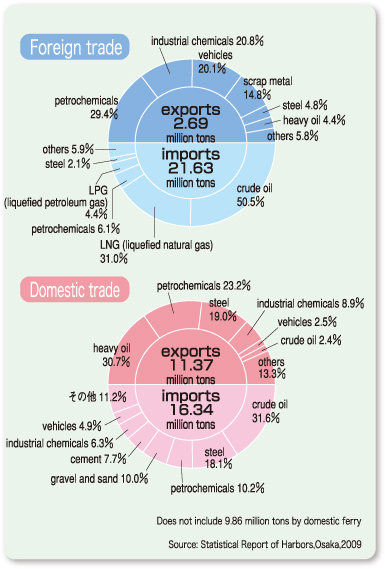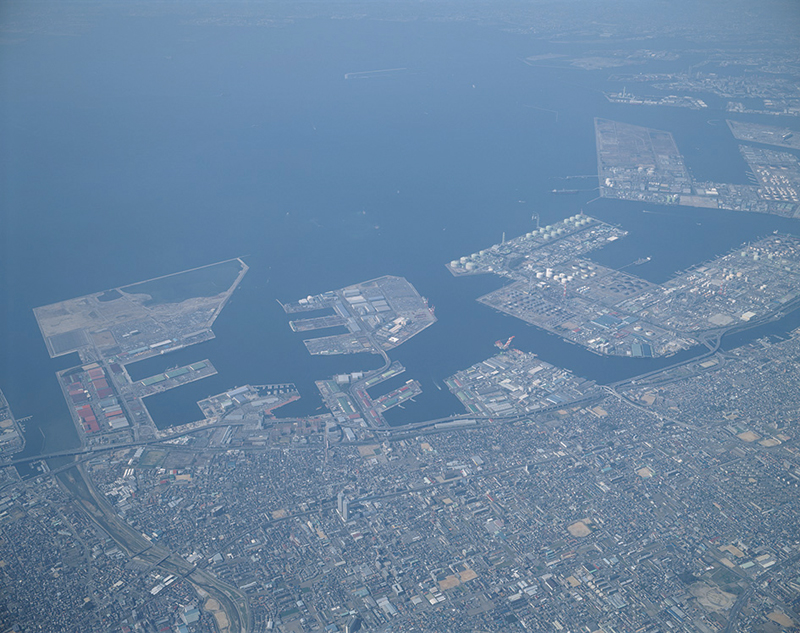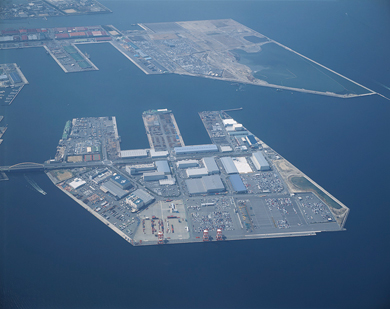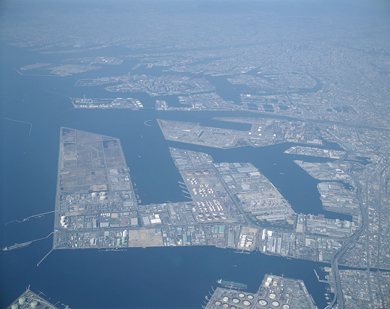Outline
Sakai Semboku Port is one of the Specially Designated Major Ports, having a large-scale waterfront industrial zone nearby. The port supports various commodity flows such as the import of raw petroleum and LNG, and the shipment of chemicals. Its industrial complex consists of factories for petroleum processing, petroleum chemistry and city gas, and a factory for large-size liquid crystal panels was recently established. In addition, the port not only plays a role as an industrial port but also functions as a disaster-prevention center covering wide areas in case of large scale disasters.Sakai Semboku Port
History of Development and Usage
| 1959 | Sakai Port was upgraded to one of the Major Ports. |
| 1965 | Routes for big steel and petroleum were established. |
| 1969 | Areas of Sakai Port and Semboku Port were integrated to form Sakai-Semboku Port and designated as a Specially Designated Major Port. |
| 1974 | Ohama Wharf (-10m and -75m) started to be in use. |
| 1975 | Shiomi Quay #3 (-10m) started to be in use. |
| 1976 | Izumiotsu Bridge was completed. |
| 1978 | Operation of Hankyu Ferry between Izumiotsu and Kokura started. |
| 1979 | Shiomi Quay #5 (-12m) and Quay #2 (-10m) started being to be in use. |
| 1989 | Shiomi Quay #6(-10m) started to be in use. |
| 1995 | Sukematsu Quay A #8(-12m) started to be in use. |
| 1996 | Sukematsu Quay B #8 (-12m) started to be in use. |
| 2001 | Sukematsu Quay #1(-9m) started to be in use. |
| 2006 | Temporary Operations Multi-purpose International Terminal of Sukematsu Quay #9 started. |
| 2007 | Ports in Osaka bay started to function as a single entity (gHanshin Porth). |
| 2009 | Operations of the port road of Sakai 2nd District started. |
Breakdown items of freight (2009)





